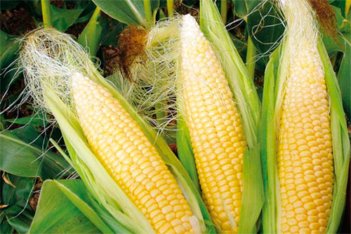
Zea mays (maize) has the highest world-wide production of all grain crops, yielding 875 million tonnes in 2012. Although a food staple in many regions of the world, most is used for animal feed and ethanol fuel. Maize was domesticated from wild teosinte in Central America and its cultivation spread throughout the Americas by Pre-Columbian civilizations. In addition to its economic value, maize is an important model organism for studies in plant genetics, physiology, and development. It has a large genome of of about 2.4 gigabases with a haploid chromosome number of 10. Maize is distinguished from other grasses in that its genome arose from an ancient tetraploidy event unique to its lineage.
Zea mays, corn or maize, is a annual grass in the Poaceae (grass family) that originated in Central America and is one of the top three cereal crops grown in the world, along with rice (Oryza sativa) and wheat (Triticum spp.), with 2010 global commercial production of dried corn totaling 844.4 million metric tons, harvested from 161.9 million hectares. Corn was domesticated in Mexico and Central America more than 7,000 years ago from teosinthe or wild maize (Z. mays subsp. mexicana). The corn plant may grow 1–4 m (3 to 13 ft) tall, with leaf blades 50 to 90 cm (19 to 35 in) long. The monoecious plant forms a terminal raceme (branched inflorescence) of male flowers—the tassel”--,while the axillary female inflorescences form cylindrical "cobs," each with 16–30 rows of spikelets (which develop into “kernels” when the seeds mature) and long protruding styles (the corn silks). Mature kernels are typically white or yellow, but may also range in color from red to purple.
Corn is used fresh (“green”) for human consumption, or may be dried and ground into flour or meal, important in Central American dishes, or popped and eaten as a snack. Corn oil, obtained from the grain, is used in cooking as well as many industrial uses, and cornstarch from processed grain is used as a thickener in sauces and puddings. Cornstarch can be further processed enzymatically to make high-fructose corn syrup, which has become widely used to replace sugar (sucrose) as an inexpensive sweetener in processed food and beverage products. In recent years, this use has become controversial, with critics charging that the sweetener is linked to obesity, but the American Medical Association has reported that additional research is needed to assess these claims.
In PAmiRDB, 325 miRNA from Z.mays are scanned against viral genomes, in order to get insight into viral genome and miRNA intractions.